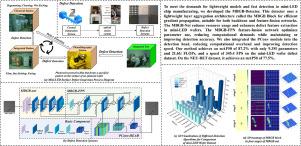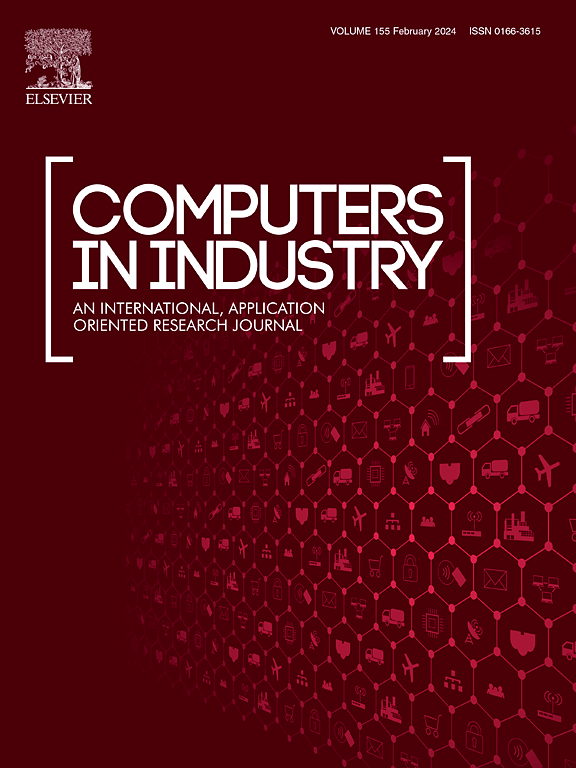MBGB - 探测器:用于微型 LED 表面缺陷检测的多分支梯度回程轻量级模型
IF 8.2
1区 计算机科学
Q1 COMPUTER SCIENCE, INTERDISCIPLINARY APPLICATIONS
引用次数: 0
摘要
为了满足微型发光二极管(LED)芯片制造对轻量级模型和快速缺陷检测日益增长的需求,我们开发了一种高效、轻量级的多分支梯度回程(MBGB)模块。在 MBGB 块的基础上,我们设计了微型发光二极管表面缺陷检测器,其中包括用于骨干网的 MBGB 网络(MBGB-net)和用于特征融合网络的 MBGB 特征金字塔网络(MBGB-FPN)。引入 MBGB 网络是为了降低资源利用率,实现高效的信息流,同时加强微型 LED 晶圆的缺陷特征提取。MBGB-FPN 优化了参数利用率,从而降低了对计算资源的需求,同时保持甚至提高了检测精度。此外,检测头还集成了部分卷积模块,以减少计算开销,提高检测速度。实验结果表明,该方法在精度和速度方面都达到了最佳性能。在微型 LED 晶圆缺陷数据集上,该方法仅用 9.3M 参数和 21.6G FLOPs 就实现了 87.2% 的 mAP50,达到了令人印象深刻的 345.4 FPS。此外,在 NEU-DET 数据集上,使用相同的参数和 FLOPs,mAP50 达到了 77.5%。本文章由计算机程序翻译,如有差异,请以英文原文为准。

MBGB-detector: A multi-branch gradient backhaul lightweight model for mini-LED surface defect detection
To meet the growing demand for lightweight models and rapid defect detection in mini-light emitting diode (LED) chip manufacturing, we developed a highly efficient and lightweight multi-branch gradient backhaul (MBGB) block. Based on the MBGB block, a mini-LED surface defect detector was designed, which included an MBGB network (MBGB-net) for the backbone and an MBGB feature pyramid network (MBGB-FPN) for the feature fusion networks. MBGB-net was introduced to reduce resource utilisation and achieve efficient information flow while enhancing defect feature extraction from mini-LED wafers. MBGB-FPN optimises the parameter utilisation, thereby reducing the demand for computational resources while maintaining, or even improving, the detection accuracy. Furthermore, a partial convolution module is integrated into the detection head to reduce the computational overhead and improve the detection speed. The experimental results demonstrated that the method achieved optimal performance in terms of both accuracy and speed. On the mini-LED wafer defect dataset, it achieved an mAP50 of 87.2% with only 9.3M parameters and 21.6G FLOPs, reaching an impressive FPS of 345.4. Furthermore, on the NEU-DET dataset, an mAP50 of 77.5% was achieved using the same parameters and FLOPs.
求助全文
通过发布文献求助,成功后即可免费获取论文全文。
去求助
来源期刊

Computers in Industry
工程技术-计算机:跨学科应用
CiteScore
18.90
自引率
8.00%
发文量
152
审稿时长
22 days
期刊介绍:
The objective of Computers in Industry is to present original, high-quality, application-oriented research papers that:
• Illuminate emerging trends and possibilities in the utilization of Information and Communication Technology in industry;
• Establish connections or integrations across various technology domains within the expansive realm of computer applications for industry;
• Foster connections or integrations across diverse application areas of ICT in industry.
 求助内容:
求助内容: 应助结果提醒方式:
应助结果提醒方式:


